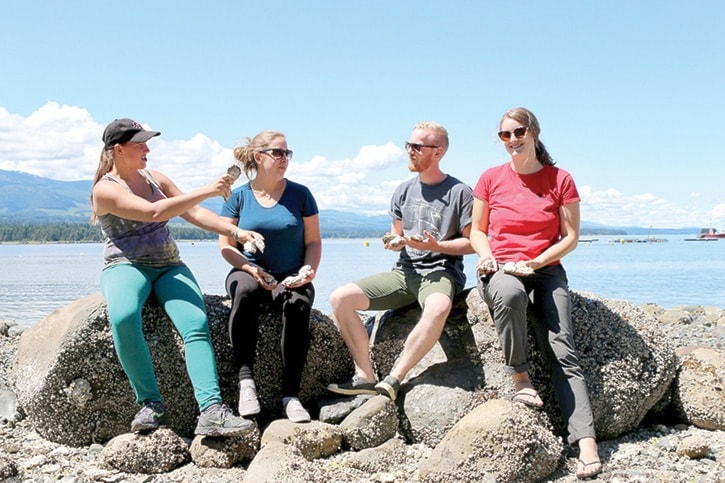By Dane Gibson
With the help of five Vancouver Island University student researchers, Garth Covernton, a University of Victoria master’s student, and his team waded into the ocean at three different spots along Vancouver Island’s coastline to collect more than 2,000 oysters and 1,000 clams for tagging.
The group is using the shellfish to monitor for microplastics, which have become a global problem.
“Microplastics are too small to see with the eye and because of that they can easily enter a wide range of organisms. Waste water treatment plants don’t pick them up and they cannot be easily digested or broken down by bacteria which is why they persist in the environment,” said Covernton. “Scientists are currently trying to assess what that means and I’m hoping my study will make a small contribution to that discussion.”
Thanks to a partnership between VIU and UVic, Covernton is working out of VIU’s Deep Bay Marine Field Station to conduct his research, under the supervision of thesis advisor Sarah Dudas, a Canada Research Chair and biology professor at VIU.
Microplastics are generally described as smaller than five millimeters and can include everything from plastic microbeads that are used in cosmetics to the thousands of plastic fibers that come off fleece clothing every time they go through the wash. Secondary sources are simply larger pieces of debris that have been broken up and worn down by the waves, wind and sun. A study recently published in Science estimated that in 2010 between 4.8 and 12.7 million metric tonnes of plastic was entering the ocean annually.
“We are looking at shellfish because they are filter feeding organisms,” Dudas said. “They accumulate anything that is in the water and they live on the coast where the most drastic changes are happening, which makes them excellent sentinels of ecosystem health.”
Covernton’s study is being funded by the Department of Fisheries and Oceans and the B.C. Shellfish Grower’s Association.
The students’ tasks tasks included using felt pens to handwrite identification numbers on every oyster and clam and measuring the shells so that when they are collected again in the fall, Covernton will know how much they grew.
The more than 3,000 shellfish tagged by the students have been released at 22 beaches, 11 shellfish farms and 11 wild sites, located in four Vancouver Island coastal regions. Covernton will be looking to re-harvest them in September to determine how much microplastics they consumed over the summer.
Dane Gibson is a writer with VIU’s communications department.
